Welsh Code History¶
Introduction and Maps¶
Following are three references that affirm the path of the Code family during the period from the 1066 Norman invasion of England and the Norman invasion of Ireland in 1169. Brian Baily has probably researched the Code genealogy more than any other and his information has been previously citied. The history of the city of Pembroke, Wales is included since Code ancestors appear to have resided for a period of the time following the Norman invasion of England. The story of Pembroke was provided by the Pembroke & Monkton Local History Society – primary author not listed. The story of Nesta (Nest) is very prominent in Welsh folklore with origins in the time our ancestors resided in or near Pembroke shire. Links to these sources are included. There are a few edits and additions to the Pembroke story.
FAMILY TREE DNA HOME (Codd/Code/Coad Family)
We are hoping to discover connections between Codd families in Ireland, England, Wales and the various locations their descendants emigrated to. The general historical outline that we have for the Codd family is that they were part of the Norman contingent that arrived in England in 1066 with William the Conqueror, dwelt in Cornwall and Devon and then some Codd's moved to Pembroke in Wales and from there continued with the Norman expansion into Ireland in 1172 with Richard Strongbow, one branch finally settling in Ferns diosesce, Ir (which became Wicklow, Wexford etc.). We would like to try to trace this migration through DNA testing of Codd ancestors and to discover where they were from prior to the Norman invasion of 1066.
FAMILY TIES PART 13: THE CODD FAMILY (Keith Evans)
The general opinion seems to be that the name Codd came over with the Normans at the time of William the Conqueror and spread out from England when the Norman earls and knights settled and intermarried in Pembrokeshire with the daughters of Welsh nobility from different parts of Wales and the Norman soldiers married local Pembrokeshire girls. As to their origins before the Norman Conquest, that remains a mystery yet to be solved.
In search of my McCreary-Magee-McGee Codd/Code Ancestors in Lanark County, Ontario, Canada (Brian Bailey)
The Codd (or Code) family came to Wicklow County** from the "Barony of Forth"* County Wexford (17th century). Their origin was English - and ultimately Anglo-Norman - coming over from Normandy with William the Conqueror, and arriving in Ireland at Castletown in Wexford with Strongbow* in 1190 as landed gentry.
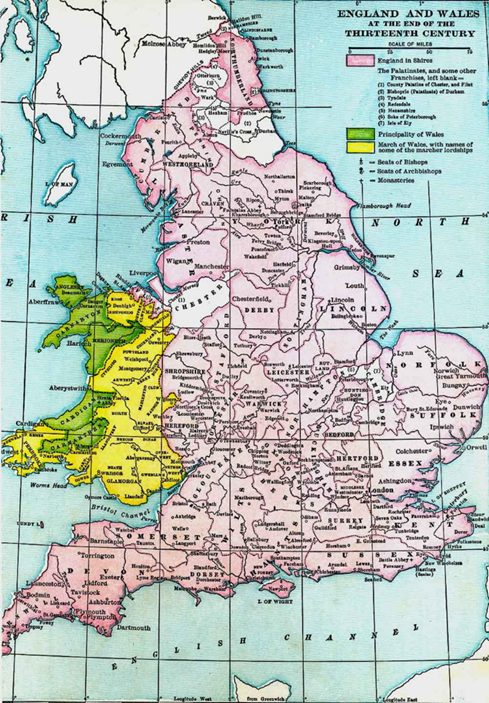
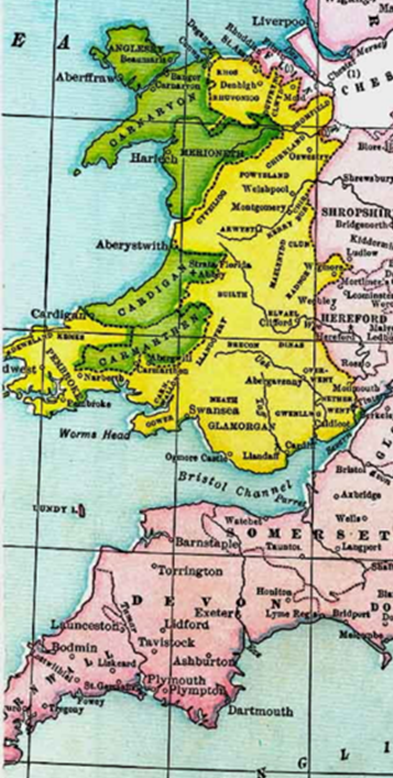

Some Code (Codd) families resided in Southwest England (Devon and Cornwall) with our ancestors eventually moving north to Pembrokeshire, Wales.
The Story of Pembroke¶
THE NORMAN INVASION AND THE FOUNDING OF PEMBROKE¶
1066 is the date imprinted in all our memories as the year in which William the Conqueror defeated Harold and established himself as king and tyrant crushing all resistance under the Norman sword.
Not so here – William was never to conquer Pembroke. What is now Pembroke was under the control of the Welsh king of Deuheubarth, Rhys ap Tewdwr, who successfully kept the Normans at bay. 1093 not 1066 is the pivotal date in our history when Rhys was killed and a Norman force under Arnulf de Montgomery sailed up the Haven to a fortified camp, which in all probability was there, defeated the local Welsh and according to Gerald de Cambrensis “threw up a slender fortress of stakes and turf”.
Norman soldier Arnulf de Montgomery - Devil's Son
He was the son of Roger the great Earl of Shrewsbury, right hand man of the Conqueror entrusted with ruling Normandy while he sought to conquer and subject England. He was perhaps the most influential and turbulent baron in Europe and he and his sons were brutal even by mediaeval standards. Henry of Huntingdon wrote that their sins were enough to frighten the devils themselves. Into his hands fell the children of the defeated Rhys.
THE NORMANS IN PEMBROKE¶
The Conquest of Wales proved difficult. In fact for over 200 years this land we occupy was the scene of civil war and insurrection – not an enviable place in which to live. It was strong enough to withstand a siege by the Welsh in 1094 under the command of Gerald de Windsor. By 1098, the Normans were secure enough to found Monkton Priory. Pembroke was to become a Norman powerbase and the surrounding area of South Pembrokeshire gradually fell under their control.
The Founding of Monkton Priory¶
Pembroke is a classic example of Norman settlement: Castle, Borough and Priory. The Church of St Nicholas was built on the site of a church and monastic buildings dating back to the early centuries of the Christian era and he made a gift of it to the Benedictine Abbey of Seez in Normandy. The Priory as a parish church became the focus of the settlement of Monkton and gave it its name “tun of the monks”.
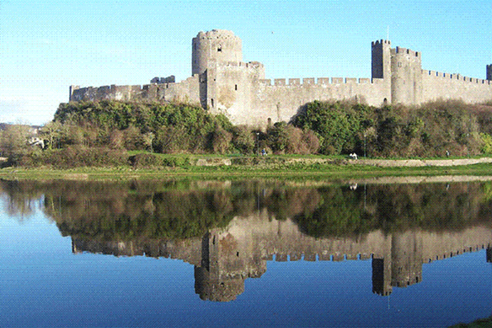
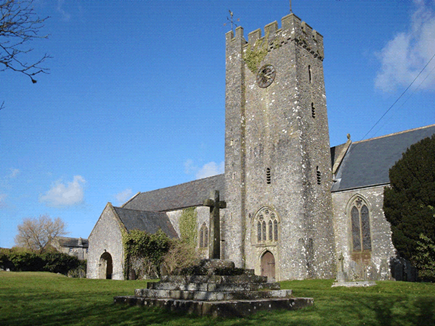
The north side of the nave of the present church is the original wall of the ancient church. The only remains of the Priory buildings, other than what was incorporated into the Priory Church, are limited to some freestanding arches and a gable wall. No archaeological work has been done in the area although aerial photographs and ground forms indicate that extensive foundations remain.
The Welsh weren’t exactly a pushover. In fact for over 200 years this land we occupy was the scene of civil war and insurrection – not an enviable place in which to live. Don’t let the tales of men in tights and Merrie Englande fool you. The Middle Ages was a time of great barbarity when life was cheap and people were treated horribly - mutilations, eye gouging and castrations if you found yourself on the wrong side and fell into the wrong hands!
Henry I¶
When Henry I succeeded to the throne in 1100, Arnulph plotted against him and lost Pembroke. Although initially dismissed, Gerald de Windsor was made Castellan of Pembroke Castle along with the hand in marriage of the Princess Nest, whose father Rhys ap Twdwr had previously ruled the land and whose beauty earned her the name "Helen of Wales". Taken hostage, she became the lover of Henry and bore him 2 children.
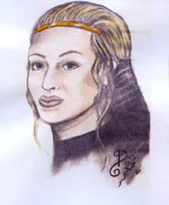


Portrait of Nest by Dan Holloway A contemporary painting of Nest in bed with Henry I Henry I
Nest - The Helen of Wales¶
These were dark times but into them shine Nest, a figure of romance who remains something of a legend. She was the most beautiful woman of her time but an enigma – we do not actually know a great deal about her other than her liaisons with her many lovers and it is her legacy that makes her historically important, the children resulting from those affairs.
Whatever she was, she must have been a remarkable woman, a woman who used her considerable sex appeal to survive. Imagine if you can a young girl of only 11 years of age taken hostage by the callous Arnulph de Mongomery, her brother mutilated, and then sent to the English Court. A hostage’s life was precarious: age and sex were no protection. But she came to the notice of the womanizing Henry Beauclerc, later to become Henry I, and entered into a liaison which was to result in at least one child. One contemporary portrait (above) actually portrays Henry and Nest in bed together!
In time, Henry decided to wed and wisely wed Mabel, daughter of the Saxon royal line. Nest had to go and was married to Gerald, Castellan of Pembroke. So it was that Nest returned to her home land and became first lady of Pembroke. Nest was married to Gerald in 1105. Nest brought with her the site of Carew Castle as a dowry and here they built the first castle on the site which was most probably the family home rather than Pembroke. There were three sons from the marriage and a daughter Angharad, who became the mother of Gerald of Wales. Through Nest, Gerald obtained a truce with the Welsh princes which safeguarded Pembroke during the uprising of Gruffyd ap Rhys
Many tales are told of her – the best known perhaps her abduction by Owain ap Cadwgan. Did she go willingly or did she not? – We’ll never know.
Edward Laws recounts the story thus, in his History of Little England Beyond Wales
“During the Christmas holidays of 1108 Cadwgan ap Blethyn, Prince of Powys, held an eisteddfod in Cardigan. To this entertainment every man of position throughout Wales was invited. Bards sang their songs, the mead passed round, the revelry was fast and furious; then one of these wandering minstrels told of Nesta, the fairest of the fair, old Rhys’s daughter, royal Gryfudd’s sister; told how she had enslaved the English king, and now was wife to the robber chief Gerald of Winsor, he who had seized on the Kymro’s land and had perched like a foul bird on Penvro Crag. Fired by this song Owain, Blethyn’s son, determined to wrest the Kymric Helen from her foreign lord. When the feast was over Owain collected a number of his friends together and sallied forth to Pembrokeshire. Claiming kinship with Nesta, he was well received by her husband Gerald, and left the castle lust mad. That night he returned with a considerable following, and having in some way obtained an entrance, laid siege to the room in which Nesta and her husband lay. The latter finding resistance hopeless was persuaded by his wife to escape through a garderobe, she herself letting him down with a rope and thus saving his life. Meanwhile the ruffian Owain burst in the door, seized Nesta, her two boys, and two other children (the illegitimate offspring of her husband), fired the castle, and carried off his prisoners into Powys.”
The children were returned to their father but Nest remained (willingly or unwillingly?). Eventually after several years, during which she gave birth to two children, Nesta returned to Gerald. Meanwhile Nest’s brother, Grufudd ap Rhys, returned from exile to reclaim the southern principality. During these troubles Gerald rode with a force against Owain (who was fighting for the King) and killed him in battle. Thus it seems probable that there was an understanding between Gerald and Gruffud, his brother in law, for South Pembrokeshire was spared the Welsh raids subjected on Cardigan, Carmarthen, Gowerland and Cemaes. Henry certainly distrusted Gerald about whom we hear no more.
Princess Nest's Legacy¶
We don't actually know a great deal about Nest other than her many liaisons - it is her offspring that makes her historically important, for from her liaisons sprang a dynasty - the Fitzgeralds, the Fitzhenrys and the Carews - who led the campaigns against Ireland. President John Fitzgerald Kennedy is supposed to be descended from her.
Little England Beyond Wales¶
Henry granted Pembroke its first charter bestowing on it special privileges so as to encourage settlers who would in turn provide a ready supply of men to defend this newly won territory. Pembroke grew into one of the earliest towns in Wales and would have consisted of a cluster of cruck houses or clom cottages outside the Castle gates. The castle, still a wooden structure, would have been a refuge in times of trouble - there was always the threat from the Welsh, who were not subdued as easily as the English had been.
About the year 1107 part of the Flemish coast was overwhelmed. The survivors of the disaster emigrated to England where previously considerable numbers had settled through the favours of the Conqueror’s Queen, Matilda of Flanders.
Henry transferred them to Wales. It was claimed that England contained so many of these Flemings who had come over in his father’s time that the country was overburdened with them. These newcomers soon mastered the English language for their own tongue was very similar and they settled in villages to which they gave English names.
And so, in an act of ethnic cleansing, the Welsh were turned off their lands and replaced by this new colony of English and Flemings with Pembroke as its governmental center. The Welsh language was displaced completely and South Pembrokeshire was dubbed “Little England beyond Wales”, a name which persists to this day.
Gruffydd ap Rhys and the tragic story of Gwenllian¶
On Henry’s death lakes and reservoirs in mid-Wales burst their banks and this was regarded as a sign of the coming rising of the Welsh. The Flemings sold their lands and cattle so as to save what they could from the dreaded flood of invasion.
Son of Rhys ap Tewdwr and Prince, by right, over Deheubarth, Gruffydd ap Rhys spent his youth in exile in Ireland having escaped the clutches of Arnulf. He was to marry Gwenllian. If Nest was the Helen of Wales then Gwenllian, her sister in law was its Boudica, valiantly leading her army against the Norman foe at Kidwelly. She was defeated and executed on the field of battle, a field which to this day bears her name “Maes Gwenllian”.
Rhys went on to score a great triumph over the Normans in 1136, defeating them in Cardigan. Apparently the whole foreign population had gathered in Cardigan for safety but the town was set on fire and in the frenzied escape across the river, the bridge broke, and the river was so choked with the carcasses of men and horses that one could pass over dry footed. The Norman power in South Wales was for the time utterly broken. Only Pembroke held firm.
THE EARLDOM OF PEMBROKE¶
Henry I held on to Pembroke for the rest of his life but when he died in 1135 civil war broke out. His only legitimate heir had drowned in the "white ship" and despite securing oaths of allegiance to his daughter Mathilda, her succession was disputed. And Stephen was appointed king. In order to gain support and secure his kingdom, the new king Stephen granted earldoms. Pembroke was one of these. The Earldom of Pembroke was created in 1138.
CREATION OF THE EARLDOM 1138¶
Gilbert de Clare "Strongbow"
Gilbert de Clare was created first Earl, a strong and powerful ruler loyal to the crown. The Earl was given palatinate powers “Neither had the king of England, as king only, anything to deal or meddle within the said county, but the Earls were free and absolute princes within themselves”.
The Earl appointed Gerald's son William as steward of the castle and they were able to keep Pembroke intact in the Welsh rebellion when the sons of Gruffydd ap Rhys reconquered much of West Wales. For his fighting prowess he was to earn the name "Strongbow".
Pembroke Castle was very different from the stone structure of today: it was a wooden stockade enclosing timber buildings. Everyone lived and slept in a Great Hall with a fire in the middle and there would also have been a Chapel.
RICHARD STRONGBOW 1148 - 1177¶
Earl Gilbert de Clare died in 1148 during an argument with King Stephen. His son Richard de Clare inherited the Earldom of Pembroke and also inherited his nickname “Strongbow”
Strongbow and the Geraldines of Pembroke (sons of Nest and Gerald) mounted an invasion of Ireland with the deposed King Diarmid which was documented by Nest’s grandson Gerald de Cambrensis or Gerald the Welshman. It was a campaign of great savagery. Richard married Diarmid's daughter and was crowned king on his death. His success incurred the jealousy of Henry II but Strongbow recognized him as sovereign.

Invasion of Ireland by Anglo-Normans
Henry forthwith journeyed to Ireland to claim his new territory, stopping at Pembroke Castle en route. A great royal fleet was amassed in the Haven for the final invasion, 18th October 1172. Henry was acknowledged as the supreme Overlord of Ireland, offered tribute, and Ireland was thus absorbed into his empire.
Strongbow was created Governor of Ireland but did not live very long to enjoy it. On the 1st June 1177 he died leaving an infant daughter Isabel as heir to the Earldom of Pembroke.